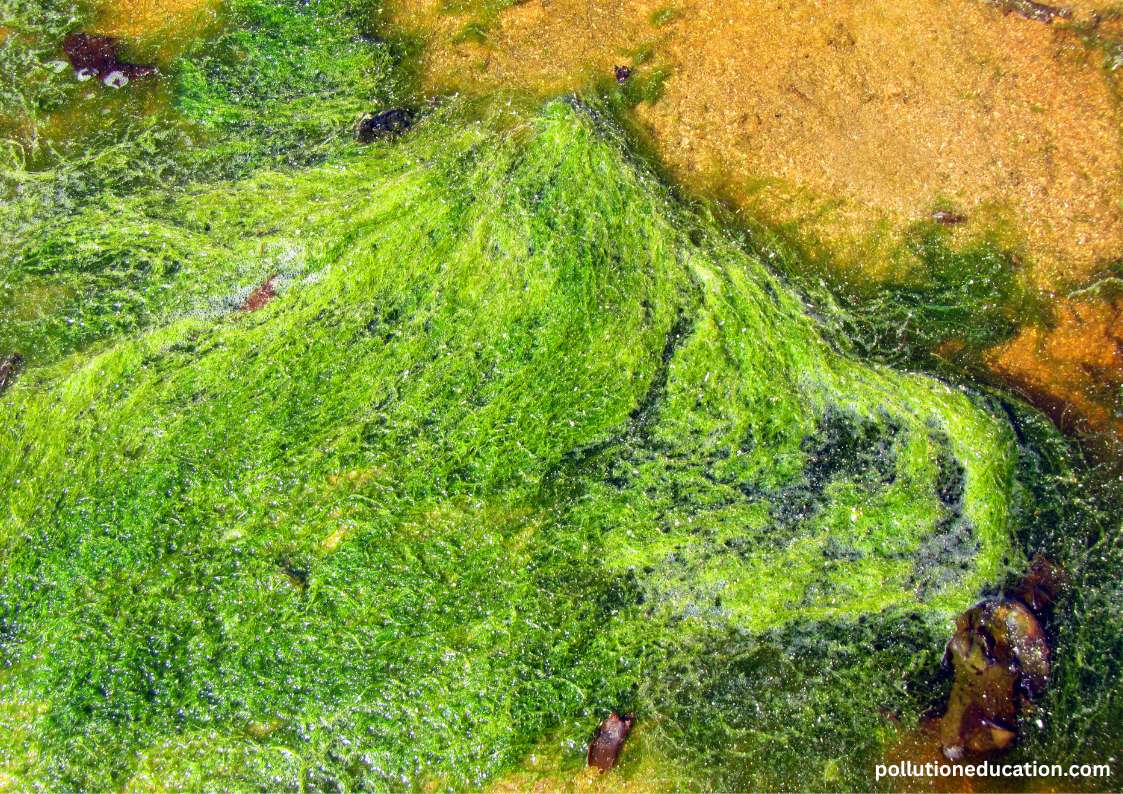In the delicate balance of aquatic ecosystems, the appearance of algal blooms is a big problem for the environment and people. These lively green patches of algae may look harmless, but they hide a danger – harmful algal toxins. To deal with this issue, it’s essential to understand how pollution and the spread of algal blooms are connected.
In this article, we’ll delve into the various forms of pollution, their sources, and how they contribute to the development of algal blooms and the release of harmful algal toxins.
The Impact of Algal Blooms on Aquatic Ecosystems
Algal blooms are characterized by the rapid and excessive growth of algae, and they can have negative impacts on the health and sustainability of aquatic environments. One of the primary concerns is the depletion of dissolved oxygen in the water. As algae proliferate, they undergo a natural life cycle that involves consuming oxygen during nighttime respiration. In extensive algal blooms, especially those dominated by certain species, nighttime oxygen depletion can result in hypoxic or anoxic conditions, creating what is commonly known as “dead zones.” Many fish species and other aquatic organisms struggle to survive in these zones, exacerbating biodiversity decline.
Algal blooms can disrupt the intricate food web of aquatic ecosystems. The overgrowth of algae, particularly harmful species, can outcompete other organisms for essential nutrients and sunlight. This disrupts the balance between primary producers and consumers, leading to a cascade effect throughout the ecosystem. The decline in populations of zooplankton, fish, and other aquatic life can have profound implications for commercial and recreational fisheries and the overall ecological health of the water body.
The toxins produced by certain algal species pose an additional threat to aquatic organisms. These toxins can harm fish, shellfish, and other marine life, impacting their reproductive success, growth, and overall well-being. Moreover, the toxins can accumulate in the tissues of these organisms, posing a risk to human health when contaminated seafood is consumed.
Different Types of Pollution that Contribute to Algal Blooms
Let’s explore how various forms of pollution contribute to the proliferation of algal blooms and the release of harmful algal toxins.
Nutrient Pollution
One of the primary contributors to algal blooms is nutrient pollution, primarily from agricultural runoff and wastewater discharges. Nitrogen and phosphorus, which are essential components for plant growth, become problematic when their concentrations exceed natural levels. This phenomenon, known as eutrophication, catalyzes algal overgrowth. Fertilizers from agricultural practices, sewage discharges, and industrial runoff introduce excessive nutrients into water bodies, creating an environment conducive to algal proliferation.
In natural settings, nutrient levels are carefully balanced. However, human activities disrupt this equilibrium, giving algae an overabundance of nutrients. The resulting algal blooms often consist of species that produce harmful toxins, threatening aquatic life and human health.
Industrial Discharges
Industrial discharges play a significant role in polluting water bodies, introducing a cocktail of chemicals that can trigger and sustain algal blooms. Heavy metals, pesticides, and other industrial pollutants not only disrupt the natural balance of aquatic ecosystems but also directly stimulate certain algae growth. These contaminants can act as nutrients for specific algal species, further exacerbating the problem.
Furthermore, industrial discharges can alter the water’s pH levels, temperature, and overall chemistry, creating conditions favorable to the proliferation of harmful algae. As these algae thrive, they release toxins that can cause widespread harm to aquatic organisms, ultimately impacting human health by consuming contaminated water and seafood.
Urban Runoff
Urban areas, characterized by impervious surfaces such as roads and parking lots, contribute to algal blooms through urban runoff. When rainwater washes over these surfaces, it picks up pollutants such as oil, heavy metals, and nutrients, carrying them into nearby water bodies. This influx of contaminants provides yet another source of nutrients for algae, contributing to the formation of algal blooms.
Moreover, altering natural water flow patterns due to urbanization can accumulate pollutants in specific areas, creating hotspots for algal growth. The resulting blooms can deplete oxygen levels in the water, causing “dead zones” where aquatic life struggles to survive. In such oxygen-deprived conditions, certain algae thrive and produce toxins that further degrade water quality.
Climate Change
While not a direct form of pollution, climate change amplifies the impact of various pollutants on algal blooms. Rising temperatures, altered precipitation patterns, and increased carbon dioxide levels all contribute to the changing dynamics of aquatic ecosystems. These changes can favor the growth of specific algal species that thrive in warmer conditions or benefit from altered nutrient availability.
Climate change also influences the frequency and intensity of weather events, such as hurricanes and heavy rainfall. These events can increase runoff, carrying pollutants into water bodies and triggering algal blooms. Additionally, warming water bodies enhance the production of harmful algal toxins, posing a dual threat to aquatic ecosystems and human health.
